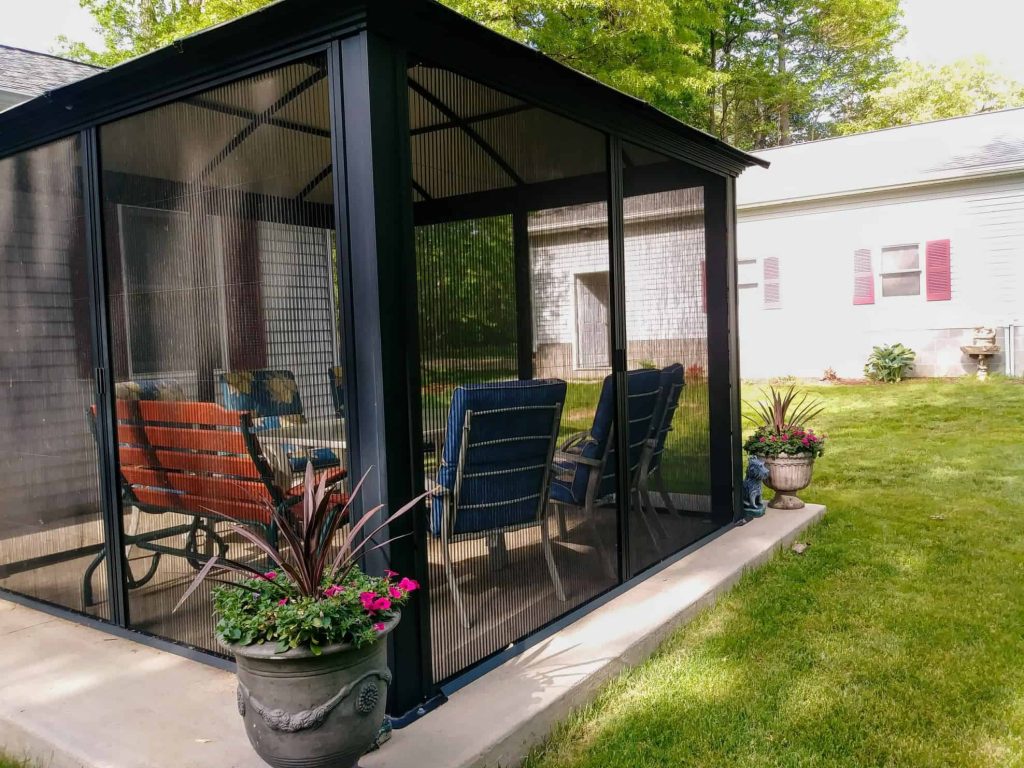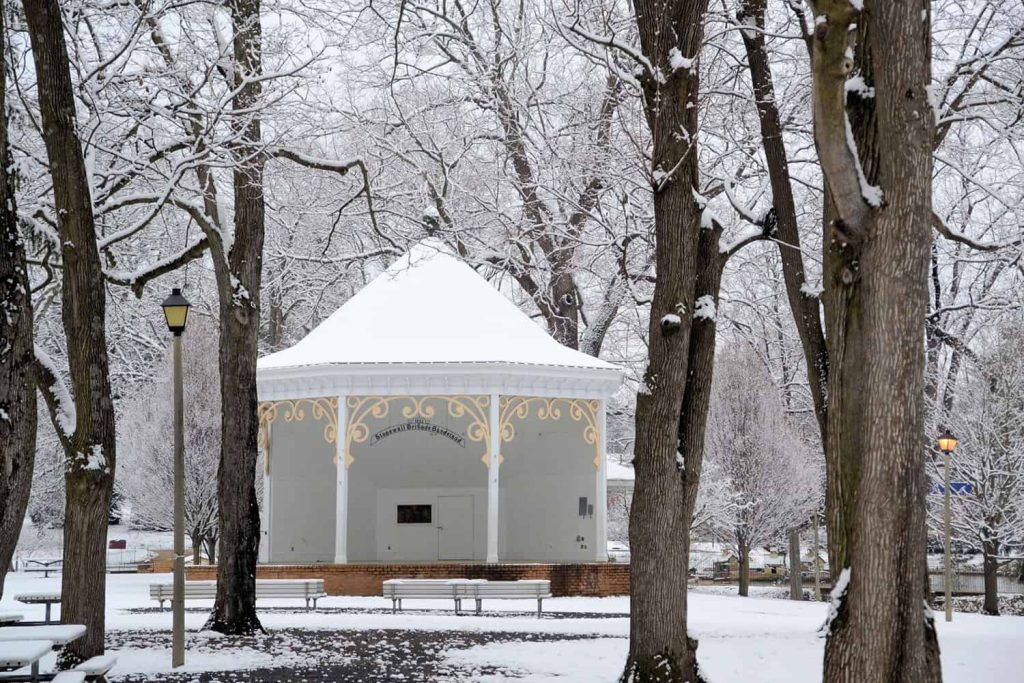A strain most Gazebo owners are saddled with is determining if their Gazebos can withstand extreme weather conditions such as winter. Extreme weather conditions are threats to the longevity and structural integrity of your Gazebo. The aftermath of a snow or wind storm could result in your Gazebo being warped or utterly destroyed.
This is one issue that keeps Gazebos owners concerned especially when a new season such as winter approaches. Most gazebo owners are quick to disassemble their Gazebo once it is winter, others never get to own a gazebo because of their skepticism regarding the maintenance of the Gazebo during extreme weather conditions such as the winter season.
This article offers everything you need to know concerning keeping your gazebos outdoors during winter. Can your Gazebo withstand a snowstorm? Is the material appropriate for outdoor placement? How can I maintain Gazebo during winter? These are the answers we have provided for you.
Can you leave a Gazebo up in winter?
Yes, you can leave a Gazebo up in winter. Although you can leave your Gazebo outdoors during winter, its tenacity against the weather depends on the type of Gazebo, which is the kind of material used in building or erecting the Gazebo. We have wooden, fiber, vinyl, and fabric Gazebos. Although the type of Gazebo is important in determining its survival rate outdoors, the strength of the materials used and the surface it is built on is another important determinant of its survival rate during this extreme weather condition.
For your Gazebo to survive outdoors during winter, it must be water-resistant because the accumulation of snow over time turns to water and this could be dangerous to the structure of your Gazebo as heavy roof weights can adversely affect and destroy the structure.
Most Gazebos can withstand snow, wind, and water longer than the fabric Gazebo. This is because fabric gazebos are made with soft covers that can hardly ensure harsh weather. In addition, a general problem for all types of Gazebos is mold and mildew.
Regardless of the material used in constructing them, they are all susceptible to these issues but the Gazebo prone to be affected first is the fabric Gazebo.
How do you protect a Gazebo in the winter?
Gazebo owners are quick to be advised to transfer their Gazebos indoors during winter to preserve and protect them from the wind. Gazebos can be permanent and temporary structures.
If you have a temporary Gazebo that can be disassembled easily, it is advisable to move them in during winter because temporary structures do not have the tenacity permanent structures have against the wind during winter.
We have come up with protective measures through which you can protect your Gazebos during winter especially if it’s a permanent structure that cannot be kept outdoors.
1. Prepare Accordingly
If you envisage that your Gazebo is to be kept outdoors during winter, ensure the material used is water-resistant. For wooden Gazebos, make use of water-resistant woods to construct the Gazebo. We have teak. For fabric gazebos, there are water-resistant covers that can be used for Gazebos.
Tarpaulins are water-resistant covers that can be used for the Gazebos. You can increase water resistance by applying or spraying the covers with water-resistant seals. Metal gazebos can be protected by making use of anti-corrosion prays that can prevent rust.
2. Clear Snow Build-Up
Regularly clear snow build-up. It is important you consistently track snow accumulation on your roof. Once you notice snow build-up large enough for the cover or roof ensure you clear them. Snow turns into water over time and the weight from the water could destroy or topple the whole structure.
In addition, water left on the roof could freeze and turn to ice which can be very damaging to your Gazebo.

3. Account For A Heating System
Set up a heating system for your Gazebo. During winter, rent or buy heaters that would be placed at strategic locations to warm up your Gazebo. There are different kinds of heaters- electric, generator, and gas-powered heaters. Choose the most available and affordable heater. For this method to be effective, make use of curtains or drawers for the Gazebos. It helps trap the heat. Decide if you would prefer a standing or hanging heater.
4. Buy Protective Kits
Use protective kits to keep the structure sturdy. Anchor kits, pegs, threaded rods, and many others are protective measures that could be employed during winter to keep your Gazebo sturdy during winter. The heavy windstorms that accompany the winter season can cause your Gazebos to be warped.
5. Insulation Is Important
Improve insulation to preserve existing heat. You can improve the insulation of your gazebo by ensuring every part of the Gazebo is sealed against pores and tears. Check for leaking roofs. Run a quick maintenance check before winter to determine spots that need refurbishing.
6. Check Often
Before the onset of the winter season, check for overgrown vines or trees and unwanted plants that could damage the Gazebo during the winter. Consistently check for pest infestation especially for wooden and fabric covers. Pest infestations shorten the longevity and durability of gazebo frames and roofs.
How can I store my Gazebo during winter?
If you decide to store your Gazebo kit indoors, we have provided you with tips on storing them during winter.
- Ensure storage location for storage is cool and dry
- Properly dismantle the kit and store the screws.
- Do not store on the floor as they are susceptible to mold and dampness if kept on the floor
- Use proper storage bags that would prevent the kit from getting damp.
How do you protect a Gazebo in the winter?
You can protect your gazebos from winter by simply disassembling them. Using heaters also helps keep the Gazebo warm. Regularly check for snow accumulation to determine when it is time to clear them. In addition, use water-resistant seals for your Gazebos.
Can you have a heater in a Gazebo?
Yes, you can have a heater in a Gazebo. Different patio heaters would suit any type of Gazebo. The kind of patio selected depends on the size of your Gazebo and your budget. Asides from patio heaters, there are also Gazebo heaters that work effectively during the winter.
Can a Gazebo stay out in winter?
Yes, a Gazebo can stay out in the winter. There are protective measures that should be employed if you are considering leaving the Gazebo outdoors. Ensure the foundation of your Gazebo is very secure for your Gazebo during a snow or wind storm. In addition, if it is a temporary Gazebo, you are advised to take it indoors if you would not employ protective kits that can keep the Gazebo affixed to the ground.
Final Thoughts
If your Gazebo is a permanent structure, you are left without a choice than to leave them outdoors. Molds, mildew, rot, and rust are major problems of gazebos and they accompany the winter season. During winter, make efforts to ensure your Gazebo is prepared and can withstand any weather condition.
Consult a professional if you run out of ideas while dealing with gazebo-related issues during winter.
More about Gazebos:

